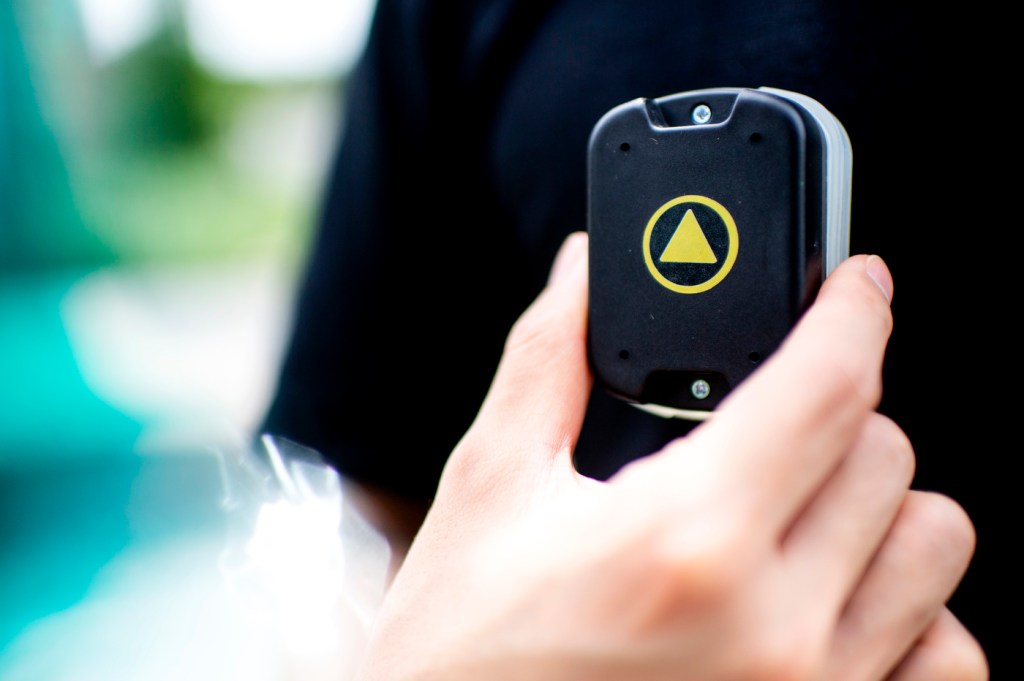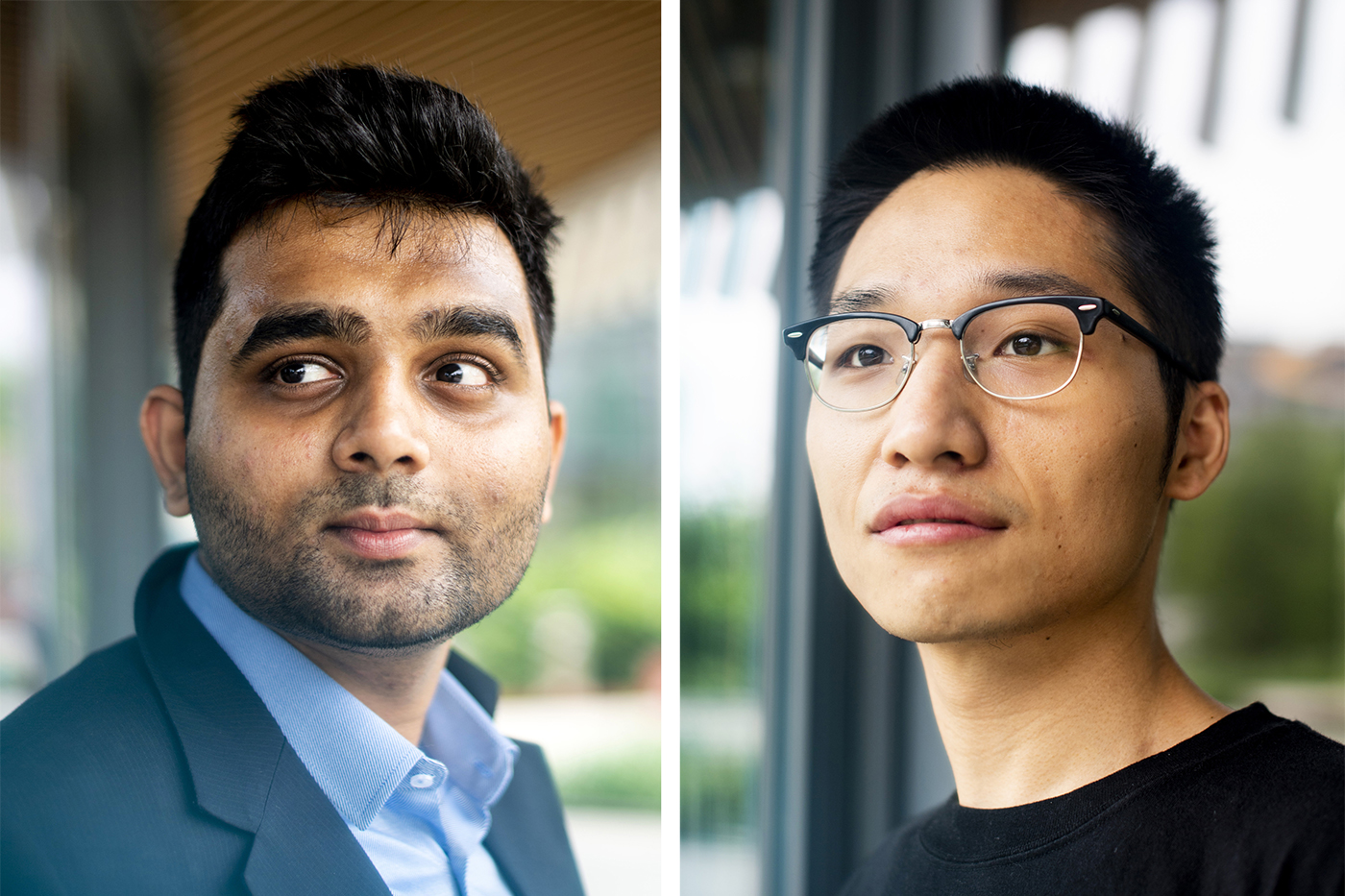Are your coworkers too close? This device will let you know.

In the effort to fight COVID-19, there are a few tried-and-true public health guidelines: wear a mask, keep a six-foot distance between yourself and other people, and keep track of people you’ve been in contact with, in case of a diagnosis. While wearing a mask has become routine for many people, the other two can be challenging—unless a machine does them for you. That’s where Northeastern graduate students Jignesh Jadhav and Yiqiang Wang come in.
Jadhav and Wang are both on co-op at Iterate Labs, a company focused on digitizing systems to increase worker productivity and safety. The two Northeastern students helped develop what they describe as wearable beacons—small digital devices that help workers stay physically distant, and enables contact tracing.
According to the U.S. Centers for Disease Control and Prevention, an important practice for preventing COVID-19 infections is for people to stay six feet apart, but it can be hard to tell exactly how far apart six feet really is when you are standing in a room with someone, especially at work.
In the workplace there is also the added difficulty of navigating spaces where you can’t see other people: Coming in and out of offices, or walking around corners in a hallway, makes it difficult to remain six feet away if you don’t know someone is there.
So, the wearable beacons monitor the distances for employees. When two people get within six feet of each other it sets off an alarm, so that people know to move apart. Jadhav and Wang helped to develop the software and analytics that power these wearable devices.
The device “effectively alarms you that you are within six feet and you should stay away and get moving to be safe,” Jadhav says.

The beacons are relatively small devices that clip on to an employee’s clothing—similar in size to the pagers of the 1980s and ’90s. Employees put the beacons on when they arrive at work, and the devices use short-range radio technology, called ultra-wideband, to communicate and record when two devices come in close contact, uploading that data to the cloud. Then, if someone’s been diagnosed with COVID-19, Iterate can then use artificial intelligence to help map whom that person has been in contact with.
The system records people’s locations, and tracks encounters, Wang says, so when people are diagnosed with the virus, a third party company can get the data from the servers to know whom the infected person came into contact with.
Jadhav and Wang say it was important to make the system easy to use, so that companies can get the process up and running quickly.
The system “is really easy to use; from the start it was designed in a way to have minimum effort to get it running,” Jadhav says.
The beacons also assist in contact tracing, which is the effort to locate anyone who came in contact with an individual who has COVID-19.
Contact tracing can be a difficult process. Part of the problem with manual contact tracing, Jadhav says, is that people don’t always know whom they come into contact with.
Say you work in a large office, and randomly run into a person you don’t know in the bathroom. Later, you find out you tested positive for COVID-19, but when asked by a public health official who you’ve been in contact with, you might not even remember the incident in the bathroom, let alone enough details to identify the other person.
Jadhav says that automating the process with the wearable beacons and the software package he helped create makes contact tracing easier, and helps make sure that chance encounters are still tracked and potentially infected people are notified.
Jadhav is studying for his masters degree in data analytics, and works in data science at Iterate Labs. At the start of his co-op, he was focused on employee safety, and how to use data science to create safety scores for employees. But when the pandemic hit, he saw how the CDC was emphasizing contact tracing, inspiring him to get certified as a contact tracer. The experience gave him an idea: Use data science to develop a way to track the people an infected person has been in contact with more effectively.
Wang is studying for his masters degree in computer system engineering, and works on back-end development and software engineering at Iterate, where he helped turn Jadhav’s idea into a reality.
Both Wang and Jadhav say that working on something as timely as this was an inspiring opportunity.
“To actually actively work on something that is this new, and the ability to analyze that and to work on that platform—it’s really exciting,” Jadhav says. “And to come up with a solution that in such a short amount of time is a significant achievement, and I feel good about it.”
For media inquiries, please contact media@northeastern.edu.





